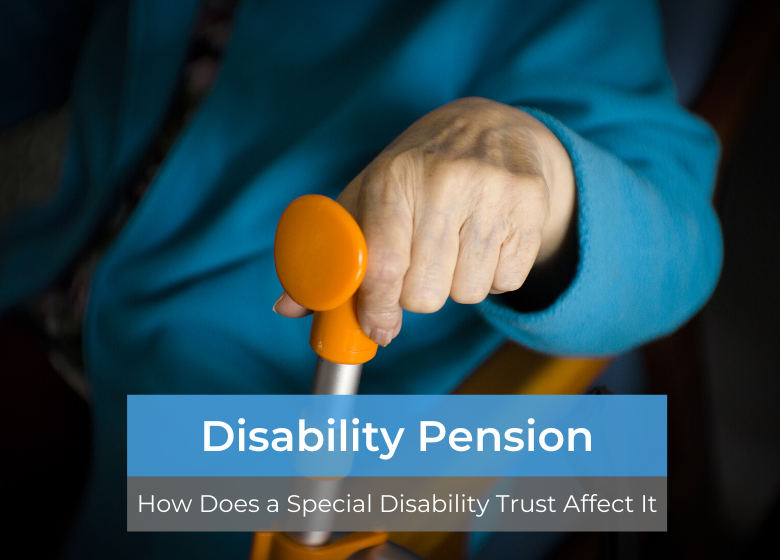Special disability trusts (SDTs) are designed to help with financing the long-term care and accommodation needs of a loved one with a severe disability.
They come with considerable tax benefits (read about them here) but they also raise many questions with regards to disability pensions and other social security benefits.
In fact, SDTs can be beneficial in this regard too…
Disability pension and welfare benefits: The effect of an SDT
Many families rely (or may rely in the future) on social security, veterans’ affairs entitlements or income support payments.
As well as the potential tax benefits of a special disability trust, there are potentially significant social security benefits for a family caring for someone with special needs.
These can be divided into two sets: those that assist the person with the disability and those that support the carers and family of someone with a disability.
Each group is subject to means testing by Centrelink, based on an assets test and an income test.
Social security benefits for those with a disability
-
Assets Test
Assets of up to $681,750 (as at 1st January 2020) within a special disability trust do not count towards personal assets for Centrelink means testing purposes.
An SDT can hold assets in excess of this amount but anything in excess of the threshold will count towards your assets for Centrelink purposes.
This can allow significant resources to be set aside for the future care of someone with a disability, without disqualifying them from social security benefits.
EXAMPLE: Say you have a severe disability and rely on the disability support pension. Sadly, your uncle has passed away and has left you $500,000. Without setting up an SDT, the inheritance would mean you would lose access to the disability support pension, as you would now exceed the personal asset threshold ($413,250 as at 1st January 2020). With an SDT, the $500,000 would be excluded from Centrelink’s calculations and the full disability pension would still be available to you, providing extended financial security.
-
Income Test
Income derived from assets held within the special disability trust are not counted in the income test for the beneficiary of the trust.
EXAMPLE: Say you have a severe disability. You’ve invested an inheritance of $500,000 into shares. Earning 6 percent on these funds means an income of $1,154/fortnight ($30,000 p.a.) which exceeds the $1,072.60/fortnight threshold (as at 1st January 2020). This would cease all disability support pension benefits. With an SDT, all of the income from these invested funds would be excluded from the income test and the disability pension would still be available.
Social security benefits for the families and carers of those with a disability
The key social security benefits to the family of someone with a disability considering a special disability trust are in the exemption of gifts for Social Security means testing.
The immediate family may gift up to $500,000 to the SDT without triggering gifting provisions.
Family members who don’t currently receive welfare benefits (because they exceed the asset or income thresholds) can gift some of their wealth into the SDT of a family member. This will then bring them within the threshold limits and provide access to government benefits.
Alternatively, it could enable a family member to increase the level of the benefits they receive, if they only receive minimal support.
-
Assets Test
Assets of up to $681,750 (as at 1st January, 2020) within an SDT, do not count towards personal assets for Centrelink means testing purposes.
EXAMPLE: Say you have a child with a disability and have recently retired. You’ve managed to put aside $1,000,000 for your retirement and the ongoing care of your child. If you were to hold the funds under your own name, you would exceed the assets test threshold excluding you from the aged pension and/or carers payments due to the asset test threshold of $716,750 (as at 1st January 2020). With an SDT, you could put $300,000 towards the trust, taking your assets below $700,000, meaning you can now access the beneficial carers payment.
-
Income Test
Income derived from assets held within the special disability trust are not counted in the income test for the beneficiary of the trust.
EXAMPLE: Say you decided to hold an income-generating investment in your own name to allow your child to receive the disability support pension. You and your husband earn a combined income of $240,000/year and, with an additional income of $30,000 from this investment, the total income comes to $270,000. You would not have access to the carers payment as you exceed the income tests threshold of $250,000/year (as at 1st January 2020). By making the investment through an SDT, your income falls to $240,000, meaning you can access the beneficial carers payment.
What next?
The disability pension and social security benefits of a special disability trust can be of great financial assistance to people with a sever disability and their families.
SDTs are not appropriate in all situations. There are stricter regulatory regimes to comply with than other trusts.
They can be extremely beneficial to families in the right situation, though.
Please contact us to take advantage of our free initial consultation and find out more about whether a special disability trust is appropriate for you.


Leave A Comment